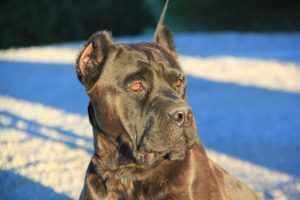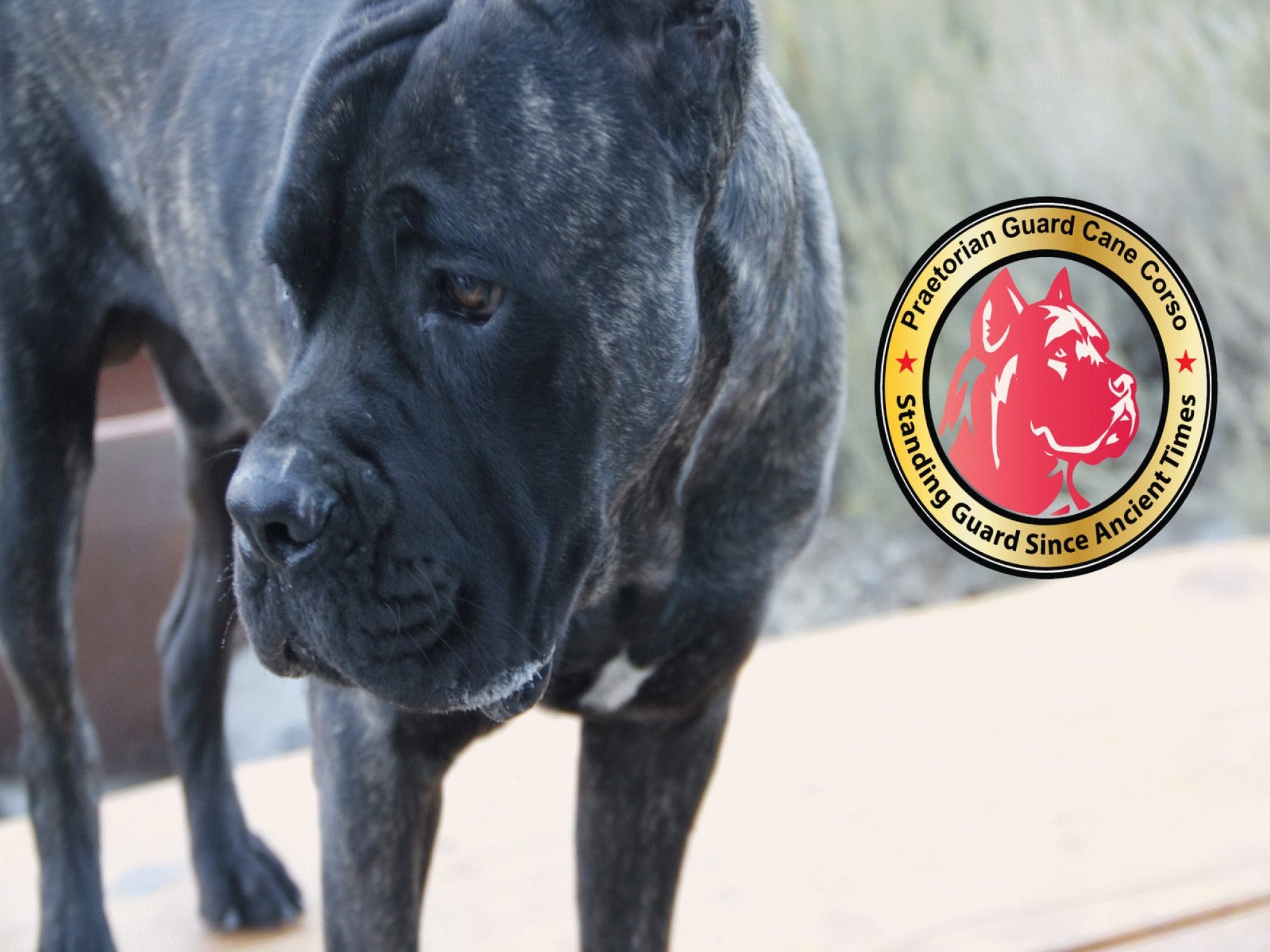Cane Corso History Was Born In War
The origins of the Cane Corso date back to the era of Roman rule. The Cane Corso originates from Italy and is the ancestor of the ancient Roman breed know as the Canis Pugnax. The Romans highly valued the Canis Pugnax or Roman Molossian for their courage and bravery. For their purposes, the Romans gathered up dogs from all their empire and categorized them into three groups. The first group was known as “Celere” – known for running down wild animals; Pugnaces – Those that attacked wild animals; and Villatici – those that guarded home and farm.
These groups of dogs transformed into what we now call the modern Cane Corso and Neopolitan Mastiff. To enhance the abilities of the Canis Pugnaces, the Romans found dogs in England and brought them back for breeding and mixing in their lines. This new breed the Pugnaces Britanniae was said to have the temperament and drive of “Mars” the god of war! Many believe that the Cane Corso’s undershot bite was due to the crossing of dogs from England during this period.
The Cane Corso ancestor Canis Pugnax would often accompany their handler into battle and act as a most effective guardian. They were so tenacious that they were commonly used in arena’s to fight larger animals. In battle, they often wore spiked collars around their neck and ankles. This spiked armor along with protruding knives made them a dangerous opponent.
The Meaning and Origins of the Cane Corso Name
The term Cane Corso comes from the Italian word “Cane” – which means dog, and “Corso” from the Latin word “Cohors” – meaning protector. The proper pronunciation of the breed name is [Kah-Neh, Kor-So] not “Cane” like Candy Cane. Another name for the breed is the “Italian Mastiff.” The old term “cane da Corso” was also used, which was identification for a type of dog called a “catch dog.” Catch dogs where used for various rural activities like working with swine, cattle, and boar hunting, even occasionally fighting a bear. Mainly, owners tasked the Cane Corso with protecting families, livestock, and farm/property. There are still used for this purpose today.
Today’s Cane Corso
The Cane Corso of today would not be around if it were not for the intervention of a few dedicated individuals who recognized the history and magnificence of the breed. The dog had reached the point of near extinction in the 1970’s. As life situations changed in Italy in the early 20th century, the  Cane Corso began to become a rare sight. By 1994 the Cane Corso was fully validated and accepted by the Italian version of the AKC, the ENCI or Italian Kennel Club. The Cane Corso was the 14th accepted Italian breed in the ENCI. The Fédération Cynologique Internationale or FCI is the largest international federation of kennels. Based in Belgium, the FCI provisionally accepted the Cane Corso breed in 1997 and then internationally ten years later. The American Kennel Club or AKC recognized the breed in 2010. Although they have their roots in war, these dogs are docile, loving family dogs, good with children, and will guard their home with an aloof wariness of strangers. The Cane Corso is good at reading situations and can sense real danger. They will protect both their owners and property.
Cane Corso began to become a rare sight. By 1994 the Cane Corso was fully validated and accepted by the Italian version of the AKC, the ENCI or Italian Kennel Club. The Cane Corso was the 14th accepted Italian breed in the ENCI. The Fédération Cynologique Internationale or FCI is the largest international federation of kennels. Based in Belgium, the FCI provisionally accepted the Cane Corso breed in 1997 and then internationally ten years later. The American Kennel Club or AKC recognized the breed in 2010. Although they have their roots in war, these dogs are docile, loving family dogs, good with children, and will guard their home with an aloof wariness of strangers. The Cane Corso is good at reading situations and can sense real danger. They will protect both their owners and property.
